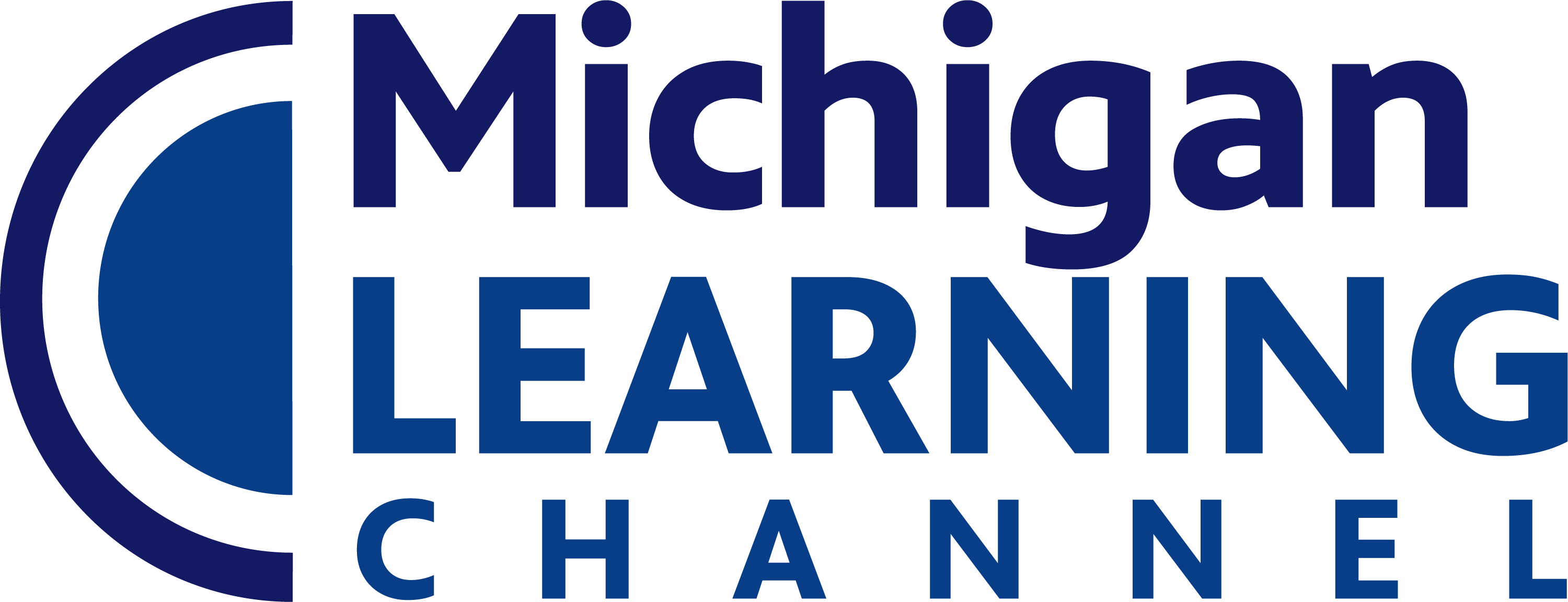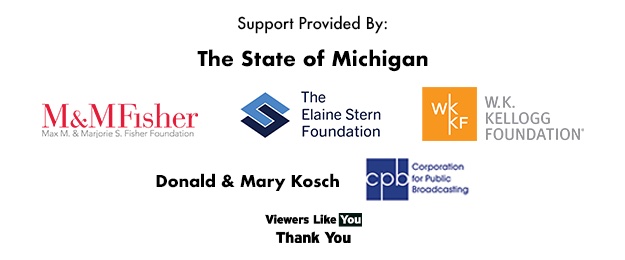Subjects
Shows
Explain and evaluate how people, individually or collectively, seek to bring the United States closer to its Democratic Values.
Identify, discuss, and analyze methods individuals and/or groups have chosen to attempt social and legal change. Assess the effects of [...]
Identify and describe a local, state, national, or international public policy issue; research and evaluate multiple solutions; analyze the consequences [...]
Equip students with the skills and knowledge to explore multiple pathways for knowledgeable, civic engagement through simulations and/or real-world opportunities [...]
Scarcity, Choice, Opportunity Costs, Incentives – using examples, explain how scarcity, choice, opportunity costs, and incentives affect decisions made by [...]
Entrepreneurship – analyze the risks and rewards of entrepreneurship and associate the functions of entrepreneurs with alleviating problems associated with [...]
Marginal Analysis – weigh marginal benefits and marginal costs in decision making.
Institutions – describe the roles of various economic institutions and purposes they serve in a market economy.
Market Structures – identify the characteristics of perfect competition, monopolistic competition, oligopoly, and monopoly market structures.
Supply And Demand – use the laws of supply and demand to explain household and business behavior.
Price, Equilibrium, Elasticity, and Incentives – analyze how prices change through the interaction of buyers and sellers in a market, [...]
Public Policy and the Market – analyze the impact of a change in public policy on consumers, producers, workers, savers, [...]
Government and Consumers – analyze the role of government in protecting consumers and enforcing contracts (including property rights), and explain [...]
Government Revenue and Services – analyze the ways in which local and state governments generate revenue and use that revenue [...]
Market Failure – explain the role for government in addressing both negative and positive externalities.
Explain the concept of public opinion, factors that shape it, and contrasting views on the role it should and does [...]
Explain the significance of campaigns and elections in American politics, currect criticisms of campaigns, and proposals for their reform.
Identify and discuss roles of non-governmental organizations in American civic society.
Explain functions and possible influence of various news and other media sources in political communication.
Analyze the credibility and validity of various forms of political communication.
Describe the five essential rights protected by the First Amendment. Through the use of court cases and examples, explore and [...]
Using the Fourth, Fifth, Sixth, Seventh, and Eighth Amendments, describe the rights of the accused; using court cases and examples, [...]
Explain how the Civil War led to the creation of the Thirteenth, Fourteenth, and Fifteenth Amendments to the U.S. Constitution. [...]
Explain how significant historical events, including but not limited to the suffrage movements and the civil rights movements, resulted in [...]
Using the Fourteenth Amendment, describe the impact of the doctrine of incorporation, due process of law, and equal protection of [...]
Identify and explain personal rights, political rights, and economic rights as well as how these rights might conflict.
Describe considerations, criteria, and examples that have been used to deny, limit, or extend protection of individual rights.
Identify and describe ways in which foreign policy is made including Constitutional powers of the executive, legislative, and judicial branches [...]
Analyze past and present examples of U.S. foreign policy, its implementation, and its impact on American and international institutions and [...]
Analyze the influence and impact of U.S. political, economic, technological, and cultural developments on countries and people around the world.
Analyze how international political, economic, technological, and cultural developments impact U.S. institutions and individuals.
Identify and evaluate the roles and responsibilities of the United States in international governmental organizations including bilateral and multilateral agreements.
Describe and evaluate the requirements and process for becoming a citizen of the United States.
Identify and analyze various Democratic Values of the United States as found in the Declaration of Independence.
Explain the impact of the major debates and compromises underlying the drafting and ratification of the American Constitution including the [...]
Analyze relationships between Democratic Values and Constitutional Principles.
Analyze how influential historical speeches, writings, cases, and laws express Democratic Values and influenced changes in American culture, law, and [...]
Use examples to investigate why people may agree on Democratic Values and Constitutional Principles in the abstract, yet disagree over [...]
Identify and describe the purposes, organization, powers, processes, and election of the legislative branch as enumerated in Article I of [...]
Identify and describe the purposes, organization, powers, processes, and election of the executive branch as enumerated in Article II of [...]
Identify and describe the purposes, organization, powers, processes, and appointment or election of the judicial branch as enumerated in Article [...]
Examine and evaluate the effectiveness the role of separation of powers and checks and balances in regard to the distribution [...]
Analyze the various levels and responsibilities in the federal and state judicial systems and explain the relationships among them.
Evaluate major sources of revenue and major expenditures of the federal government.
Identify and explain how Supreme Court decisions and provisions in the U.S. Constitution have impacted the power of the federal [...]
Describe limits the U.S. Constitution places on powers of the states and on the federal government’s power over the states.
Explain interactions and tensions among federal, state, and local governments using the necessary and proper clause, the Commerce Clause, and [...]
Describe how state, local, and tribal governments are organized, their major responsibilities, and how they affect the lives of people [...]
Subjects
Shows
Explain and evaluate how people, individually or collectively, seek to bring the United States closer to its Democratic Values.
Identify, discuss, and analyze methods individuals and/or groups have chosen to attempt social and legal change. Assess the effects of [...]
Identify and describe a local, state, national, or international public policy issue; research and evaluate multiple solutions; analyze the consequences [...]
Equip students with the skills and knowledge to explore multiple pathways for knowledgeable, civic engagement through simulations and/or real-world opportunities [...]
Scarcity, Choice, Opportunity Costs, Incentives – using examples, explain how scarcity, choice, opportunity costs, and incentives affect decisions made by [...]
Entrepreneurship – analyze the risks and rewards of entrepreneurship and associate the functions of entrepreneurs with alleviating problems associated with [...]
Marginal Analysis – weigh marginal benefits and marginal costs in decision making.
Institutions – describe the roles of various economic institutions and purposes they serve in a market economy.
Market Structures – identify the characteristics of perfect competition, monopolistic competition, oligopoly, and monopoly market structures.
Supply And Demand – use the laws of supply and demand to explain household and business behavior.
Price, Equilibrium, Elasticity, and Incentives – analyze how prices change through the interaction of buyers and sellers in a market, [...]
Public Policy and the Market – analyze the impact of a change in public policy on consumers, producers, workers, savers, [...]
Government and Consumers – analyze the role of government in protecting consumers and enforcing contracts (including property rights), and explain [...]
Government Revenue and Services – analyze the ways in which local and state governments generate revenue and use that revenue [...]
Market Failure – explain the role for government in addressing both negative and positive externalities.
Explain the concept of public opinion, factors that shape it, and contrasting views on the role it should and does [...]
Explain the significance of campaigns and elections in American politics, currect criticisms of campaigns, and proposals for their reform.
Identify and discuss roles of non-governmental organizations in American civic society.
Explain functions and possible influence of various news and other media sources in political communication.
Analyze the credibility and validity of various forms of political communication.
Describe the five essential rights protected by the First Amendment. Through the use of court cases and examples, explore and [...]
Using the Fourth, Fifth, Sixth, Seventh, and Eighth Amendments, describe the rights of the accused; using court cases and examples, [...]
Explain how the Civil War led to the creation of the Thirteenth, Fourteenth, and Fifteenth Amendments to the U.S. Constitution. [...]
Explain how significant historical events, including but not limited to the suffrage movements and the civil rights movements, resulted in [...]
Using the Fourteenth Amendment, describe the impact of the doctrine of incorporation, due process of law, and equal protection of [...]
Identify and explain personal rights, political rights, and economic rights as well as how these rights might conflict.
Describe considerations, criteria, and examples that have been used to deny, limit, or extend protection of individual rights.
Identify and describe ways in which foreign policy is made including Constitutional powers of the executive, legislative, and judicial branches [...]
Analyze past and present examples of U.S. foreign policy, its implementation, and its impact on American and international institutions and [...]
Analyze the influence and impact of U.S. political, economic, technological, and cultural developments on countries and people around the world.
Analyze how international political, economic, technological, and cultural developments impact U.S. institutions and individuals.
Identify and evaluate the roles and responsibilities of the United States in international governmental organizations including bilateral and multilateral agreements.
Describe and evaluate the requirements and process for becoming a citizen of the United States.
Identify and analyze various Democratic Values of the United States as found in the Declaration of Independence.
Explain the impact of the major debates and compromises underlying the drafting and ratification of the American Constitution including the [...]
Analyze relationships between Democratic Values and Constitutional Principles.
Analyze how influential historical speeches, writings, cases, and laws express Democratic Values and influenced changes in American culture, law, and [...]
Use examples to investigate why people may agree on Democratic Values and Constitutional Principles in the abstract, yet disagree over [...]
Identify and describe the purposes, organization, powers, processes, and election of the legislative branch as enumerated in Article I of [...]
Identify and describe the purposes, organization, powers, processes, and election of the executive branch as enumerated in Article II of [...]
Identify and describe the purposes, organization, powers, processes, and appointment or election of the judicial branch as enumerated in Article [...]
Examine and evaluate the effectiveness the role of separation of powers and checks and balances in regard to the distribution [...]
Analyze the various levels and responsibilities in the federal and state judicial systems and explain the relationships among them.
Evaluate major sources of revenue and major expenditures of the federal government.
Identify and explain how Supreme Court decisions and provisions in the U.S. Constitution have impacted the power of the federal [...]
Describe limits the U.S. Constitution places on powers of the states and on the federal government’s power over the states.
Explain interactions and tensions among federal, state, and local governments using the necessary and proper clause, the Commerce Clause, and [...]
Describe how state, local, and tribal governments are organized, their major responsibilities, and how they affect the lives of people [...]


